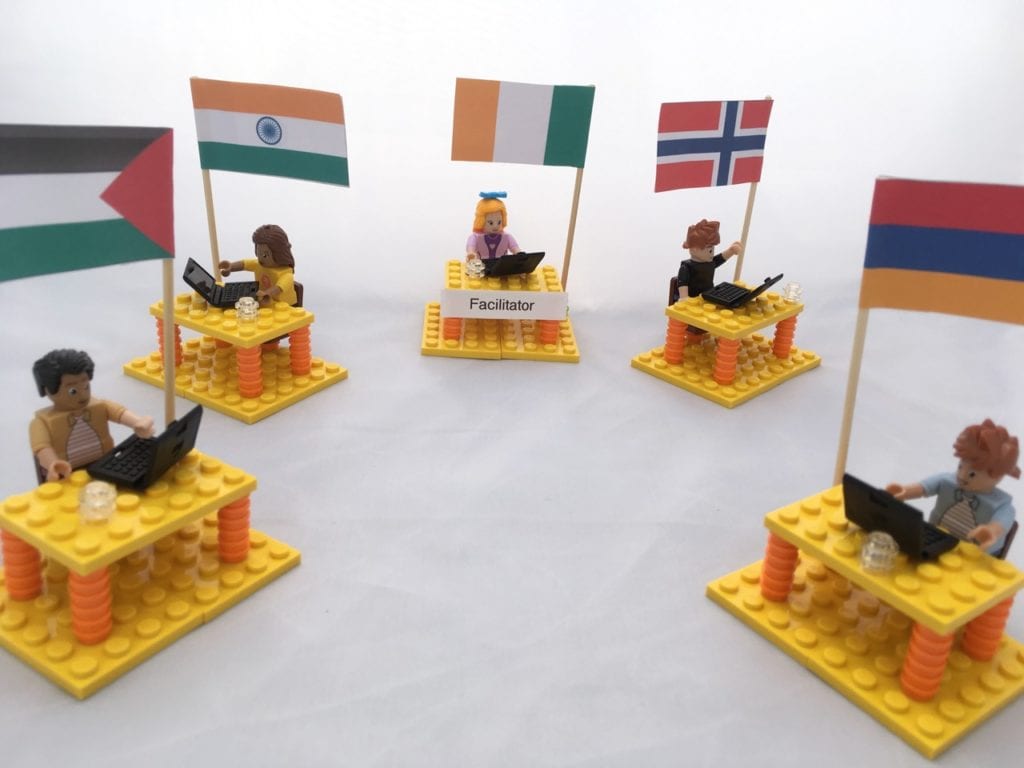By Órla Cronin
How do we stay authentic and connected in a virtual world? It sounds like a paradoxical question, but we know that (poorly run) virtual events can feel alienating and disconnecting. We’re getting many clients approaching us in these trying times to ask us how they can design and run an engaging, effective and productive virtual event.

© @legophotofy
At ICA:UK we believe that it is every bit as important to bring our skills and values to bear on virtual facilitation as it is in face to face events. There’s lots of material out there on the technical side of running virtual meetings, but once you’ve sorted out the logistics, then the facilitation begins. Here are six tips distilled from over a decade of designing and running virtual events and training others to do so.
1) Consider the task you are trying to complete AND the experience you want people to have in your event. In a work environment, we’re usually very good at identifying the task to be done. But we often neglect to think about what kind of experience we want people to have. When designing your event, consider how to replace all the spontaneous, informal, relational and enjoyable interactions that happen naturally when waiting for a live meeting to start, or during the coffee breaks and mealtimes.
2) Consider the ‘arc’ of the meeting, from pre-work through to convening through to decision making and post meeting debriefs. In ICA, we use ‘ORID’, a Technology of Participation technique which is one of our core methodologies, to design a meeting which moves through different ‘levels’ of information: Objective (the ‘what’), Reflective (the ‘gut’), Interpretive (the ‘so what’) and Decisional (the ‘now what’). At each of these levels we use a range of activities and modes of interaction which are best suited to that kind of information.
3) Examine the power dynamics which may be in play. If you know about particular dynamics, for example, status and seniority, you may choose to design your breakout groups intentionally rather than choosing random allocation.
4) Don’t let the ‘technological’ tail ‘wag the dog’. Design your ideal virtual event, and then choose the most appropriate technology to do that. Though as facilitators we have our own preferences (and licences!) but new platforms are becoming available almost daily. Two principles which should guide any choice of technology are: available bandwidth, and ease of use.
5) Don’t let the technology limit you. It’s always possible to have ‘excursions’ out from your base meeting technology to add on software which will allow you to optimise other functions: polling, Q&A, deliberation, voting, brainstorming and clustering, documenting, drawing, 3D modelling etc.
6) Plan. Plan. Plan. We create a script which resembles a stage manager’s prompt book which includes timing, who is doing what (we always run with a facilitator and a producer except for the very smallest meetings), what modality (audio, chat, type etc) is being used at any time, slides with instructions and questions to be answered, and so on. Apart from ensuring that the meeting flows, and enabling you to consider what to cut if it’s running late, it also serves as insurance in case the facilitator ‘falls off’ the meeting – the producer can take over seamlessly.
How can we help ?
Sign up for our interactive, engaging, 90 minute virtual facilitation training for just £20. We have a range of dates in April and May to give you more insights, and an opportunity to discuss and experience some of these tips and tools.
Or join one of our longer, more intensive courses. We can offer both public and bespoke courses, consultancy, and mentoring. For more information contact Orla@orlacronin.com or submit an enquiry.
Ask us for help! Wanting to facilitate your own virtual meeting and looking for some guidance and support? Contact us to discuss how we can help- talking through the design, offering tips and hints, mentoring your development, or even asking us to co-facilitate or produce for you.
